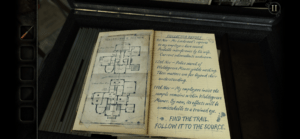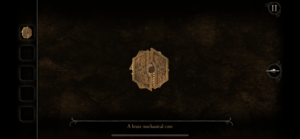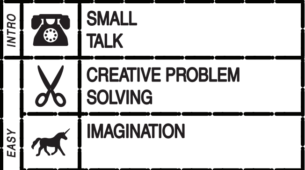Game: The Room: Old Sins
Creator: Fireproof Games
Platform: Windows, iOS, Android
Target Audience: While the suggested age on the app store is 9+, I believe that the target audience is likely 12+. The game involves hidden clues and difficult puzzles that would likely be frustrating to a 9 year old. The narrative is also very vague and lacks an ending, which makes it ripe for a more mature audience. The game has a dark fantasy-adjacent element to it, and is perfect for anyone who likes moody and often disorienting gameplay.
The Room game franchise are essentially digital escape rooms whereby the player, in a 1st person perspective, interacts with objects and puzzles around the room in order to solve a mystery, or “find the null.” Most of the puzzles are solved by manipulating objects and perspectives. I don’t think the puzzles required much thinking, per se, as they mostly dealt with just investigating and interacting with objects to unlock something else that needed to be investigated or interacted with and so on and so forth.
Though I did not complete the game (I only made it to several “rooms” or gameplay spaces), the story kind of seems to lose a thread for a bit as it seems like the player must navigate through spaces without having a good justification for why. When the game grounds these next “levels” in context, the narrative feels a lot more alive and imminent, whereas when you just move from one room to the next, solving puzzles with little context, the game starts to feel a bit monotonous.
The game opens in a darkly lit room and begins with a small tutorial explaining the basic mechanics. Thus far, the only plot point grounding the narrative is this journal (see figure 1) with vague details about the disappearance of a couple.

Figure 1
The mechanics of the game involve pinching out to zoom out, swiping around to look around a space, and clicking to interact with an object more closely. It’s not always obvious what you can click on (i.e. what is “interactable”), but I actually think that makes the game more interesting because it allows more space for discovery and exploration. If, for example, only interactable objects were highlighted in some way, the game would lose a lot of mystery and would play out very linearly. There wouldn’t really be an incentive for a player to investigate the environment, which would be a major loss as the game has very detailed spaces. So, although this can be a rather frustrating feature when you feel stuck on what to do next, it ultimately adds to the gameplay experience. Aesthetically, the game is very dark and gothic, which makes it inherently difficult for low visibility players. While the color scheme and aesthetic make the game atmospheric, it also makes it harder to explore spaces.
Another mechanic at play is a special eyepiece that the player can put on when interacting with certain objects that give off a shimmer (see figure 2).

Figure 2
When the eyepiece is in use, the shimmery surface transfigures into a puzzle or clue that the player can interact with. For example, using the eyepiece on this doorway seen in figure 2, the player reveals figure 3.

Figure 3
Because the game operates as more of a discovery room, – the puzzles are not logic based nor do they require really intense problem solving – the narrative can be slightly more embedded. Players are not entirely focused on just solving the puzzles and instead they are allowed the bandwidth to examine clues and fit them into the larger narrative.
I remember playing these games when I was in middle school and loving the exploration of these darkly gothic spaces. I can’t recall the plots of any of the games, which aligns with what I experienced in “Old Sins.” The narrative is quite vague and hazy, which is OK (I don’t think games or stories for that matter need to have clear plot lines that get wrapped up in little bows). However, I think sometimes the narrative gets completely ignored or shelved for part of the gameplay and therefore the game becomes narratively uninteresting.
One mechanic that is not aligned with the game is the inventory box. When exiting a room or space, the player has to pinch out of the area to zoom out. However, when exiting out of an inventory space (such as in figure 4), the player must use a back button. I think mobile games excel when the mechanics are as simple and congruent as possible, so this was a missed opportunity to have congruence. Instead of a back button, the designers could have implemented the same pinch out mechanism.

Figure 4
Ethics:
I believe this puzzle game is approachable in form to many players because the puzzles aren’t inherently logic based but rather just involve interaction and exploration. Thus, no “intelligence” is really required. That being said, the aesthetics make it visibly difficult to interact with the puzzles, which is required of players. No knowledge is explicitly required from players (other than familiarity with mobile games, but that can also easily be picked up).


